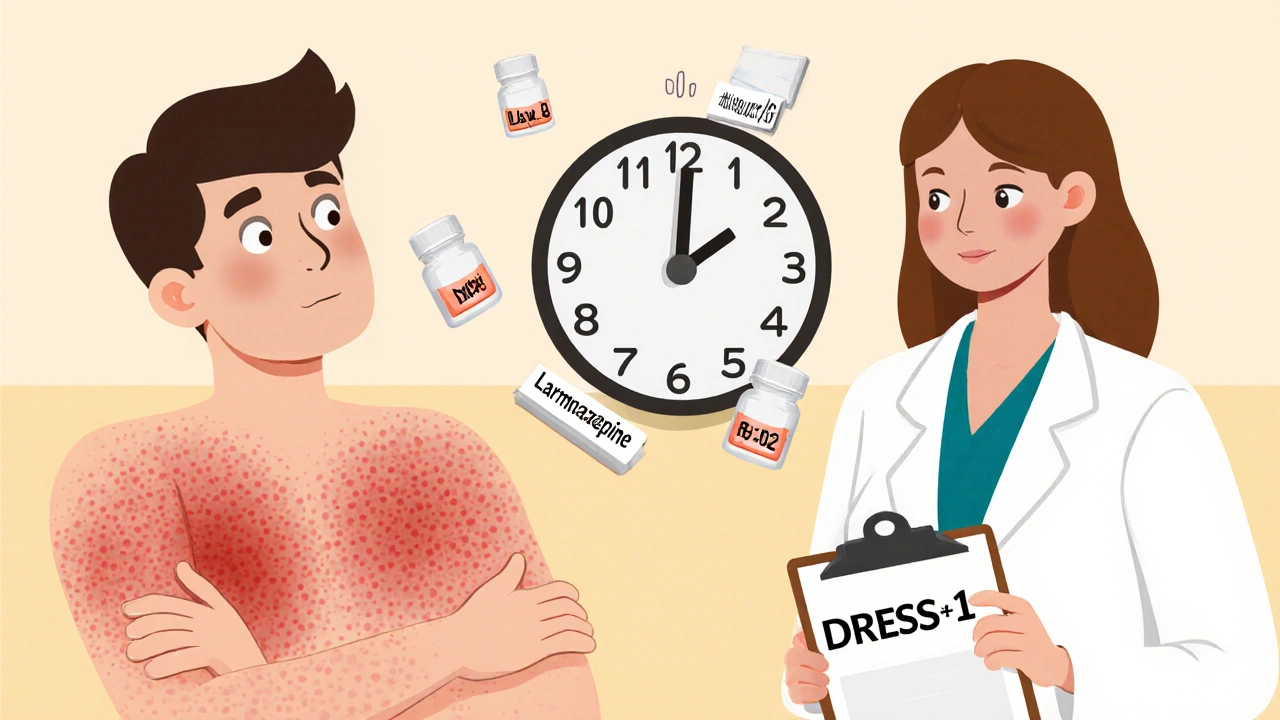DRESS Syndrome: What It Is, How It Happens, and What Medications Trigger It
When your body overreacts to a medication, it doesn’t always mean a simple rash or upset stomach. Sometimes, it triggers something far more dangerous: DRESS syndrome, a severe, delayed drug reaction that affects the skin, organs, and immune system. Also known as Drug Reaction with Eosinophilia and Systemic Symptoms, it’s not common—but when it happens, it can be life-threatening. Unlike typical side effects that show up within hours, DRESS syndrome often takes weeks to develop after you start a new drug. That delay makes it easy to miss—or worse, misdiagnose as the flu, a virus, or even an allergy.
This isn’t just a skin issue. DRESS syndrome can wreck your liver, kidneys, lungs, or heart. It’s tied to specific drugs—like anticonvulsants (carbamazepine, phenytoin), antibiotics (minocycline, sulfonamides), and allopurinol, used for gout. People with certain genetic markers, especially HLA-B*58:01, are at higher risk. But even if you don’t have those genes, taking the wrong drug at the wrong time can still trigger it. The immune system goes haywire, flooding your body with eosinophils and atypical lymphocytes, causing inflammation across organs. That’s why early detection matters: stopping the drug fast can mean the difference between recovery and organ failure.
Many of the posts here focus on how medications behave in the body, what side effects to watch for, and how to catch hidden dangers before they escalate. You’ll find guides on drug safety, patient-reported symptoms, and how reactions like DRESS syndrome fit into the bigger picture of unpredictable drug responses. You’ll also see how things like photosensitivity, a skin reaction triggered by UV light combined with certain drugs, and predictable vs unpredictable side effects, the two main categories of adverse drug reactions help explain why some reactions are easy to anticipate—and others, like DRESS, sneak up on you.
There’s no single test for DRESS syndrome. Doctors look at your symptoms, blood work, timing of drug exposure, and rule out infections. That’s why your own feedback—tracking rashes, fever, fatigue, or swelling—can be the first clue. The posts here give you tools to recognize patterns, ask the right questions, and understand what your body is telling you. Whether you’re on long-term meds for epilepsy, gout, or an autoimmune condition, knowing the signs of DRESS syndrome could save your life.
Delayed drug reactions can appear days or weeks after taking a medication and range from mild rashes to life-threatening conditions like DRESS or Stevens-Johnson Syndrome. Learn the signs, causes, and what to do if you suspect one.

